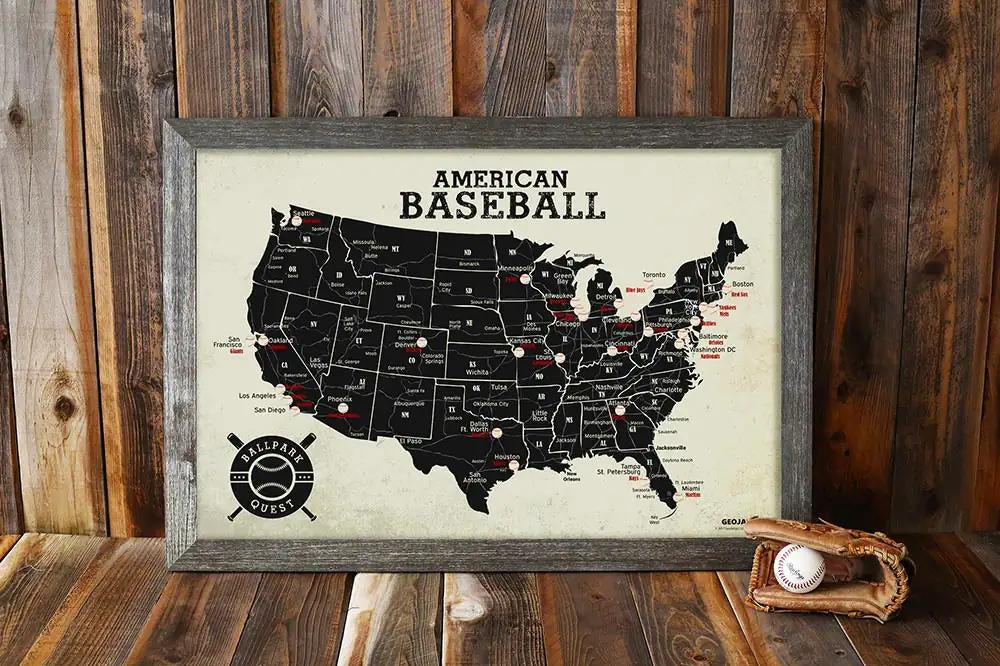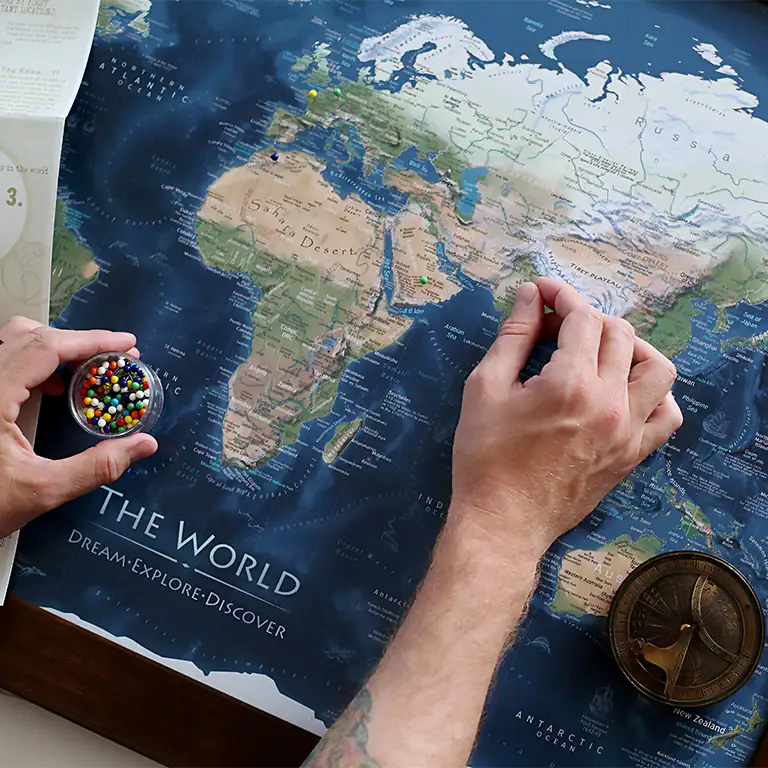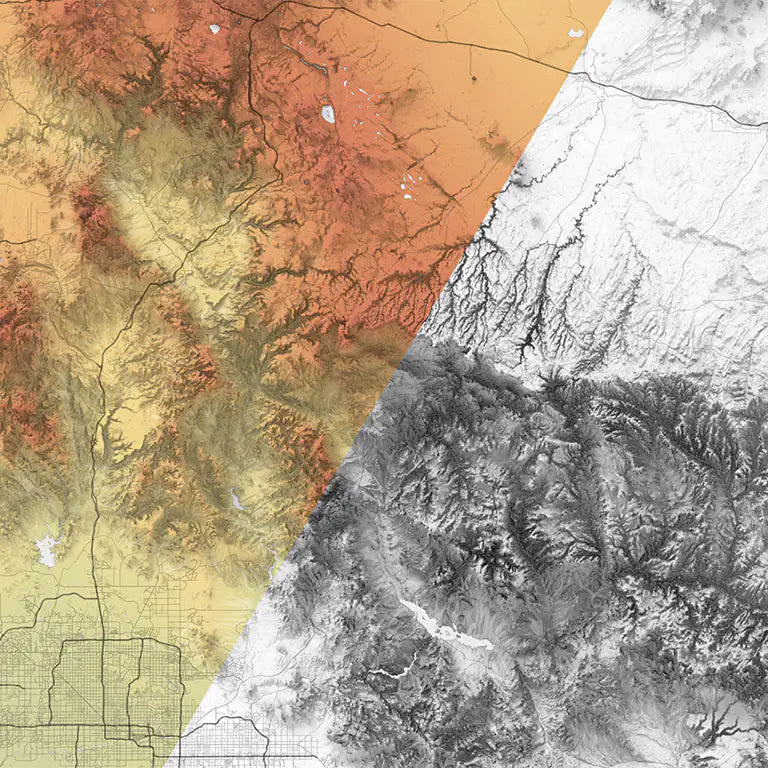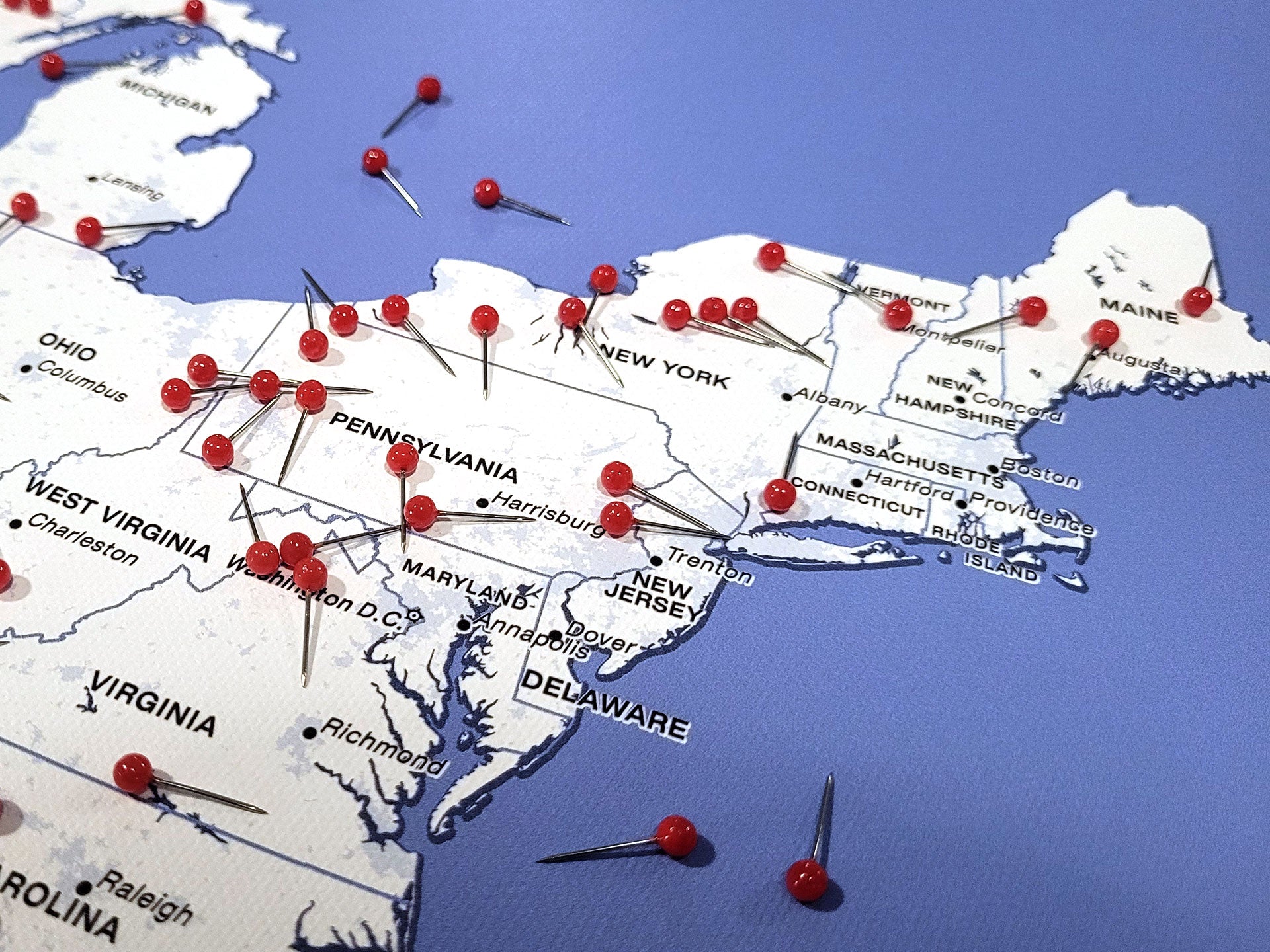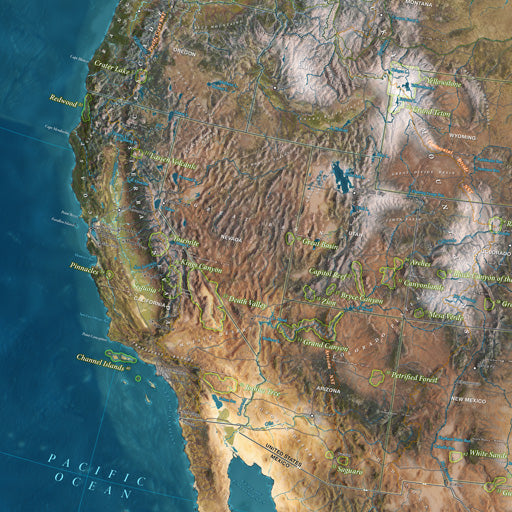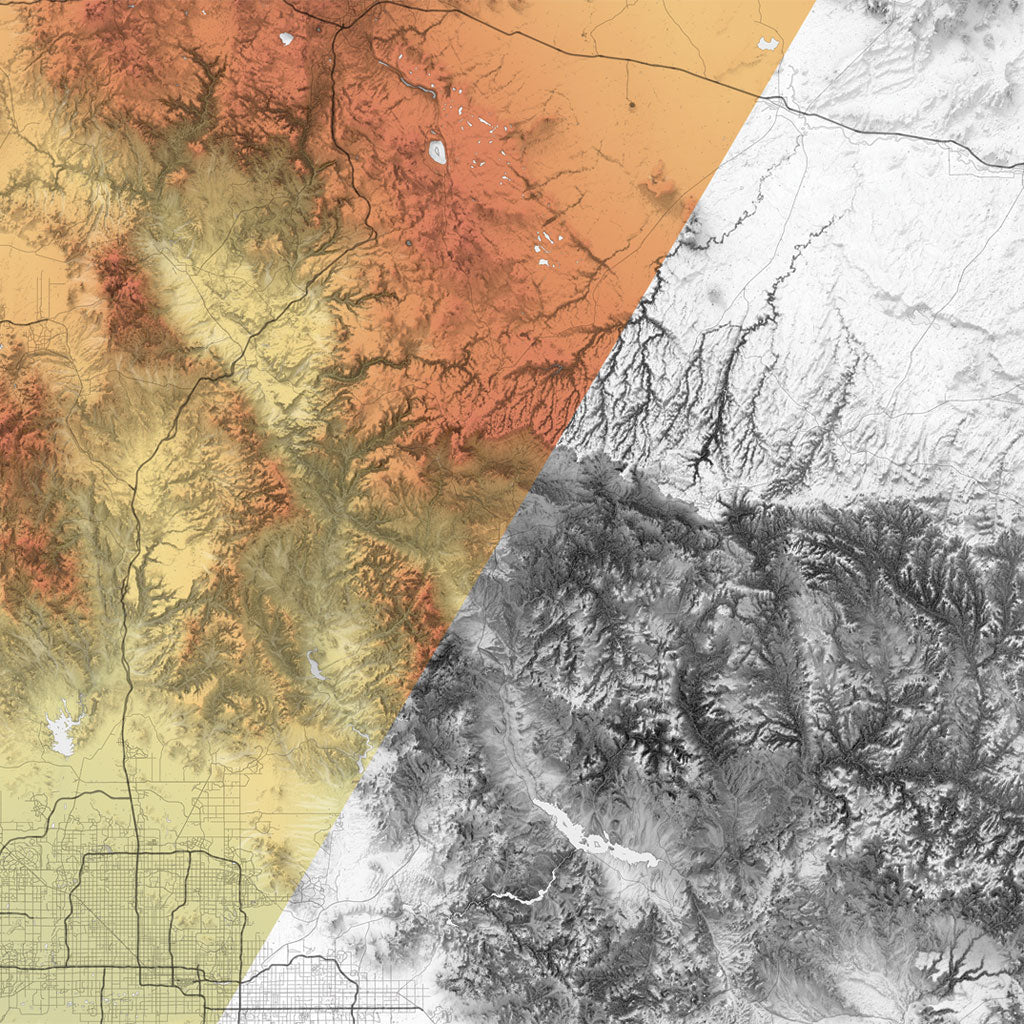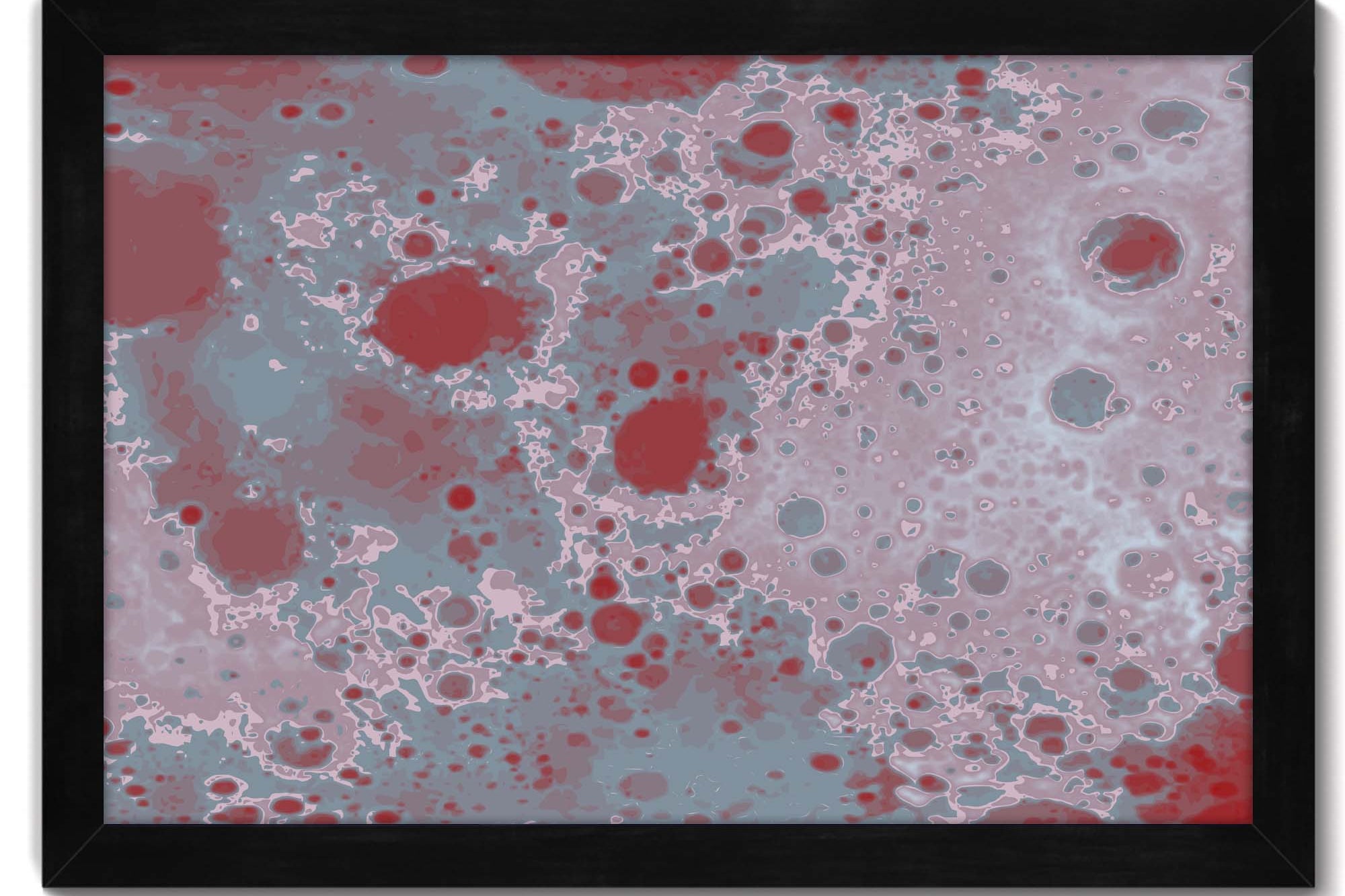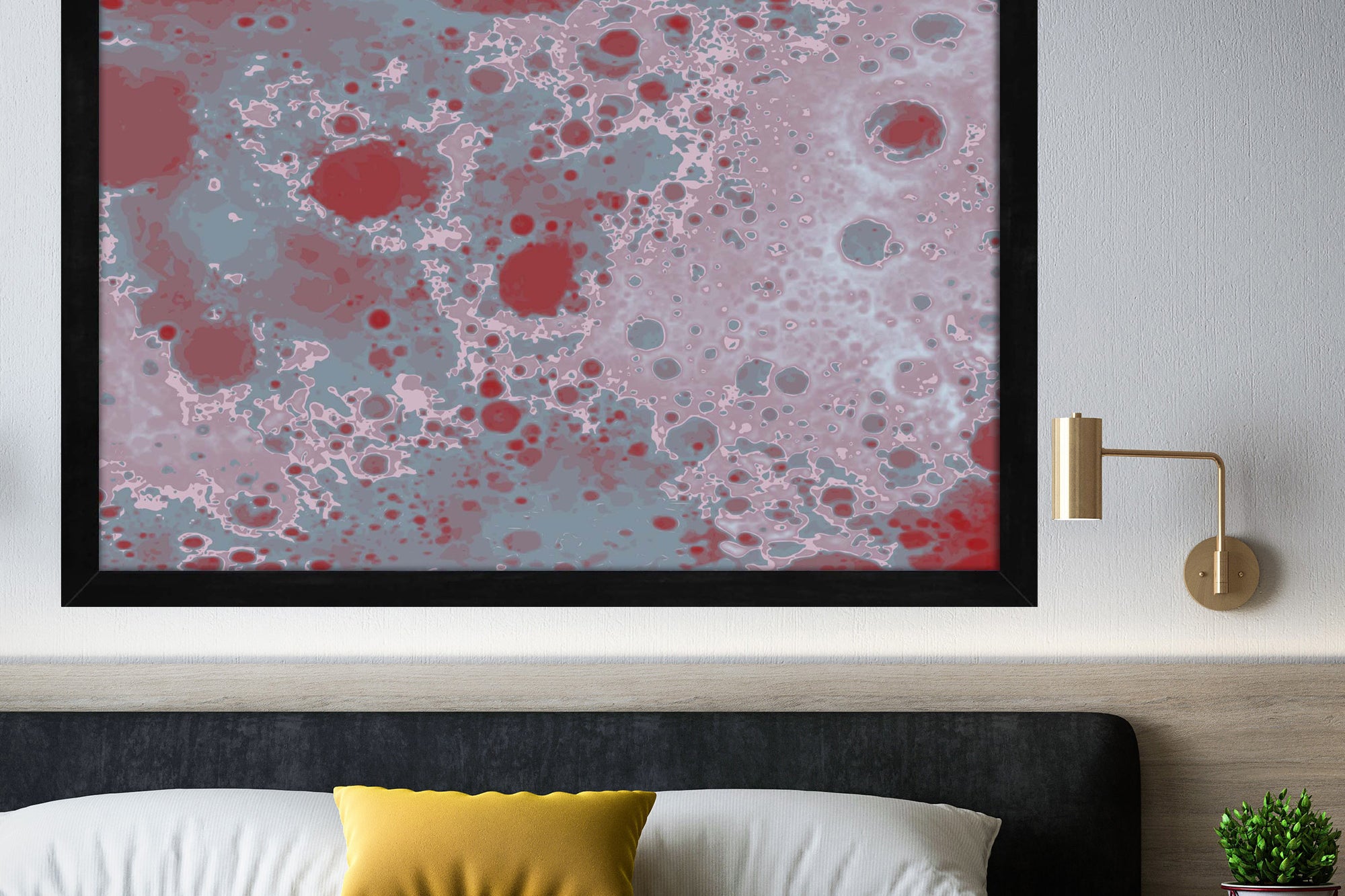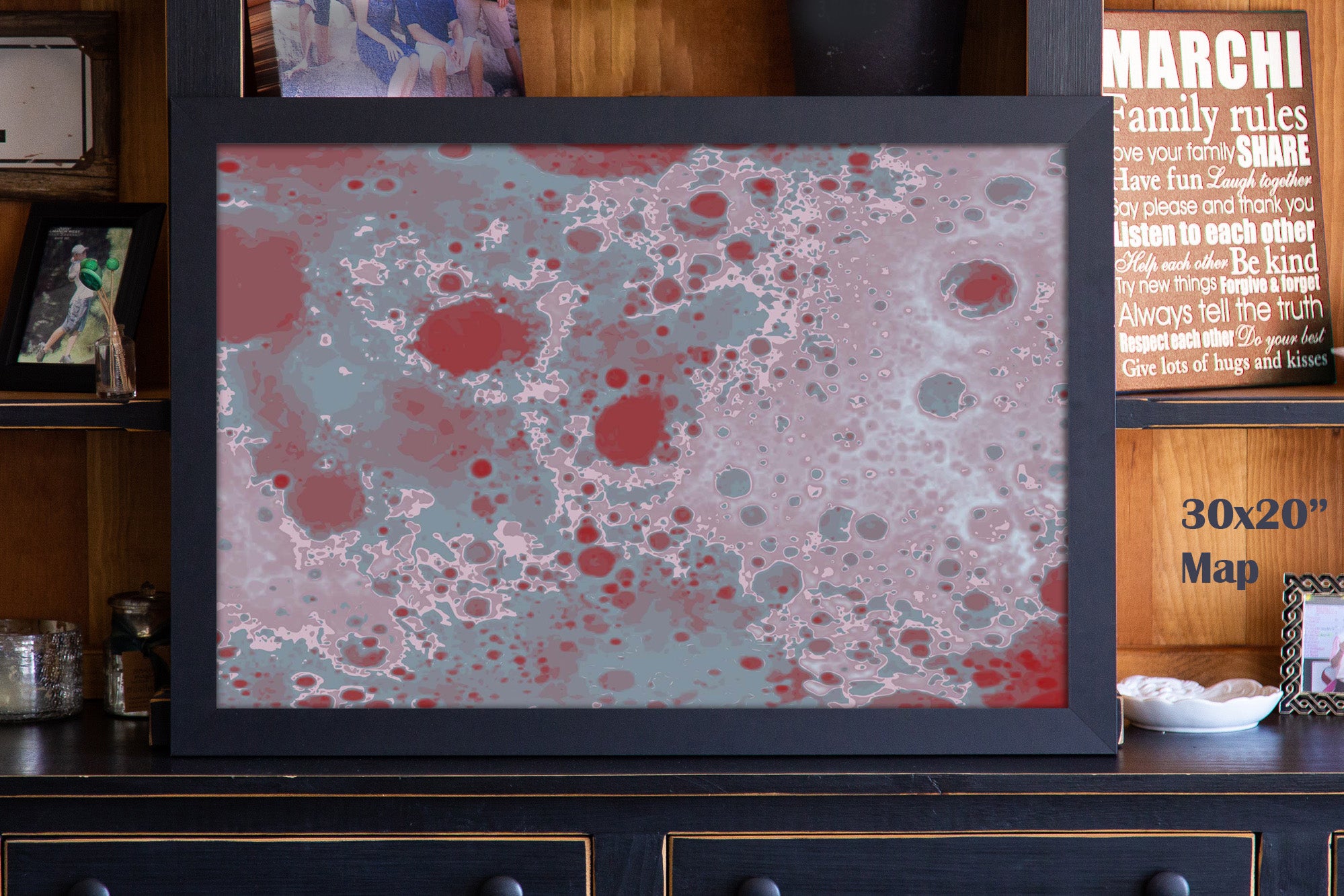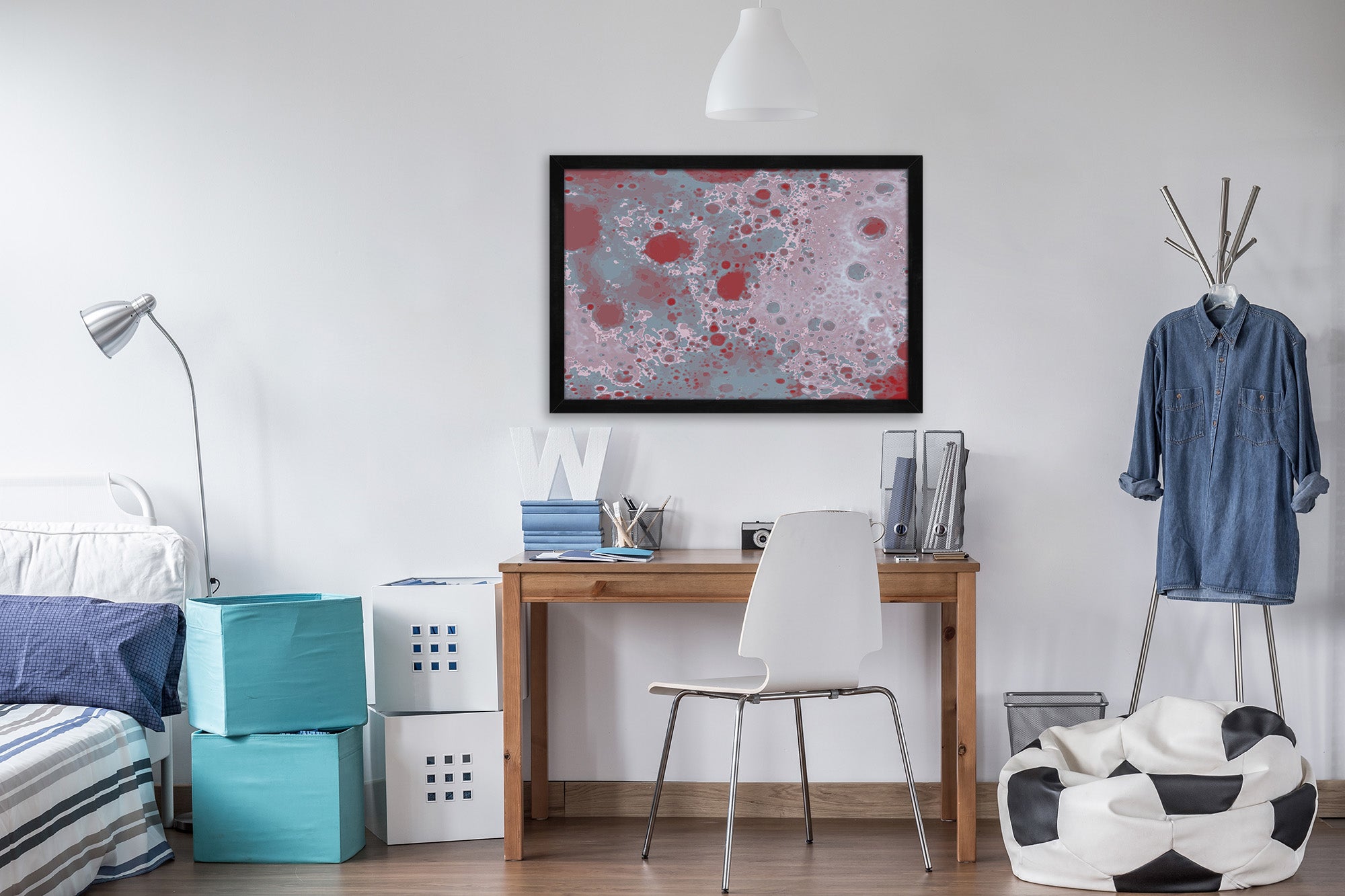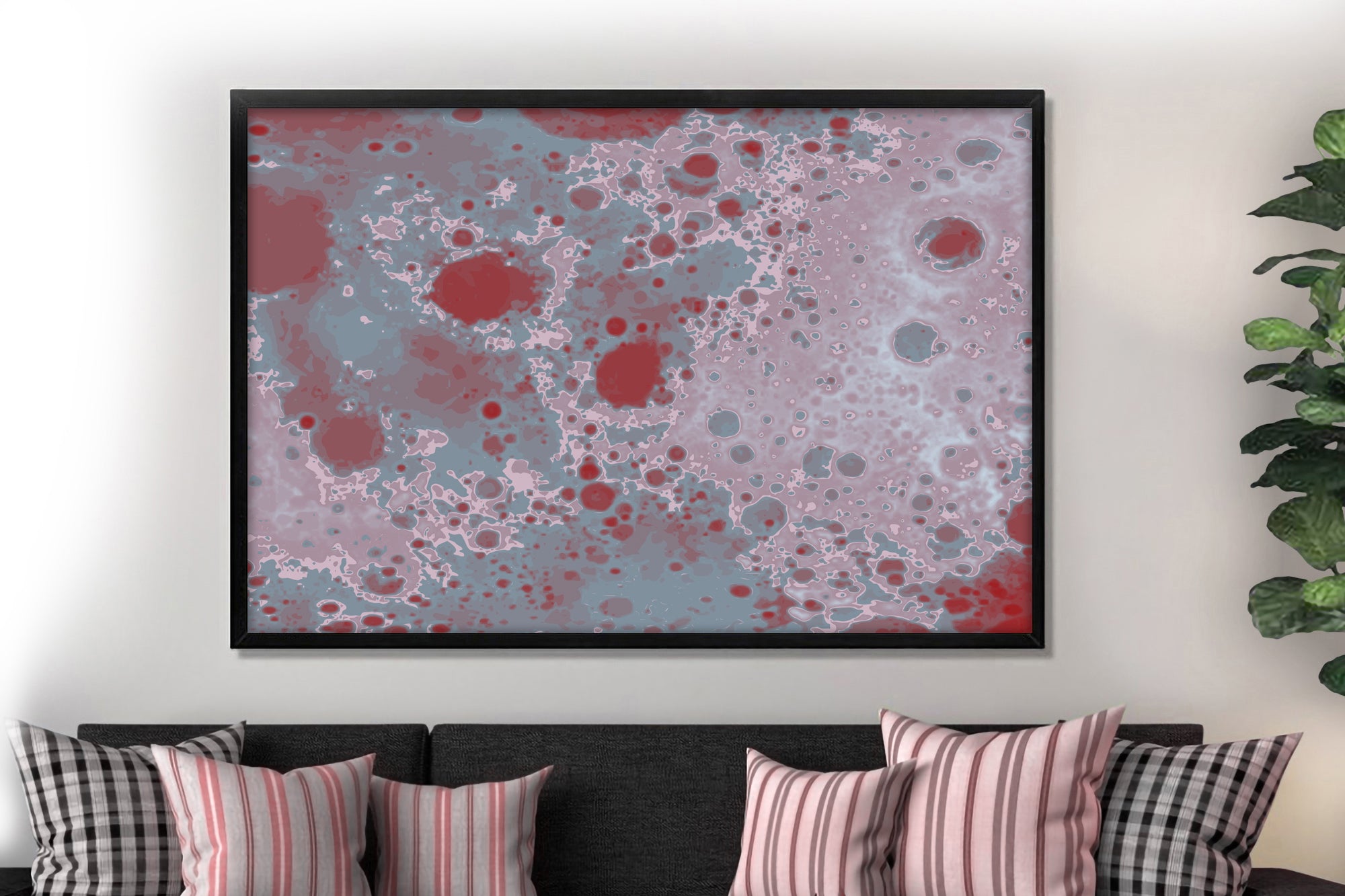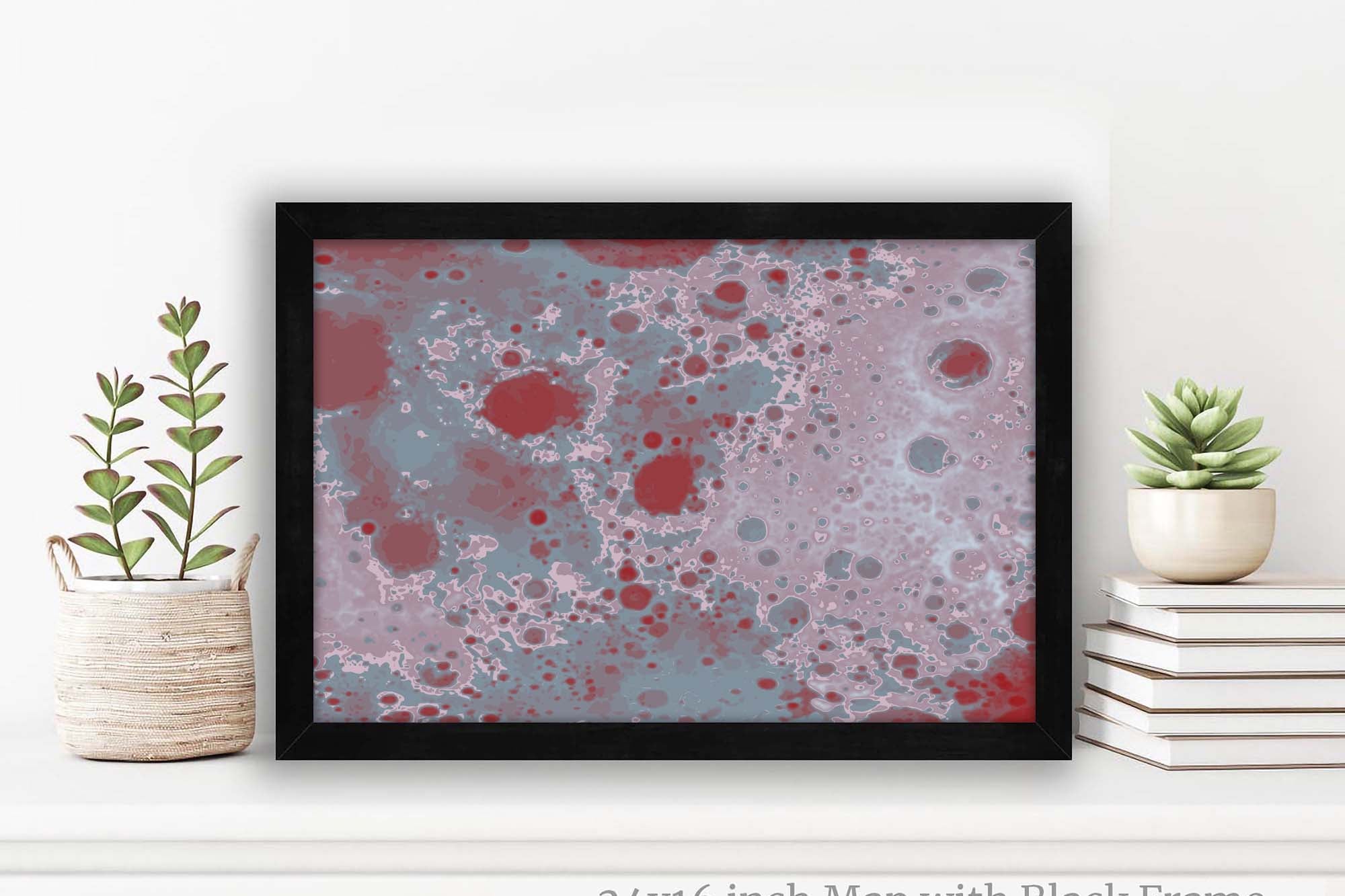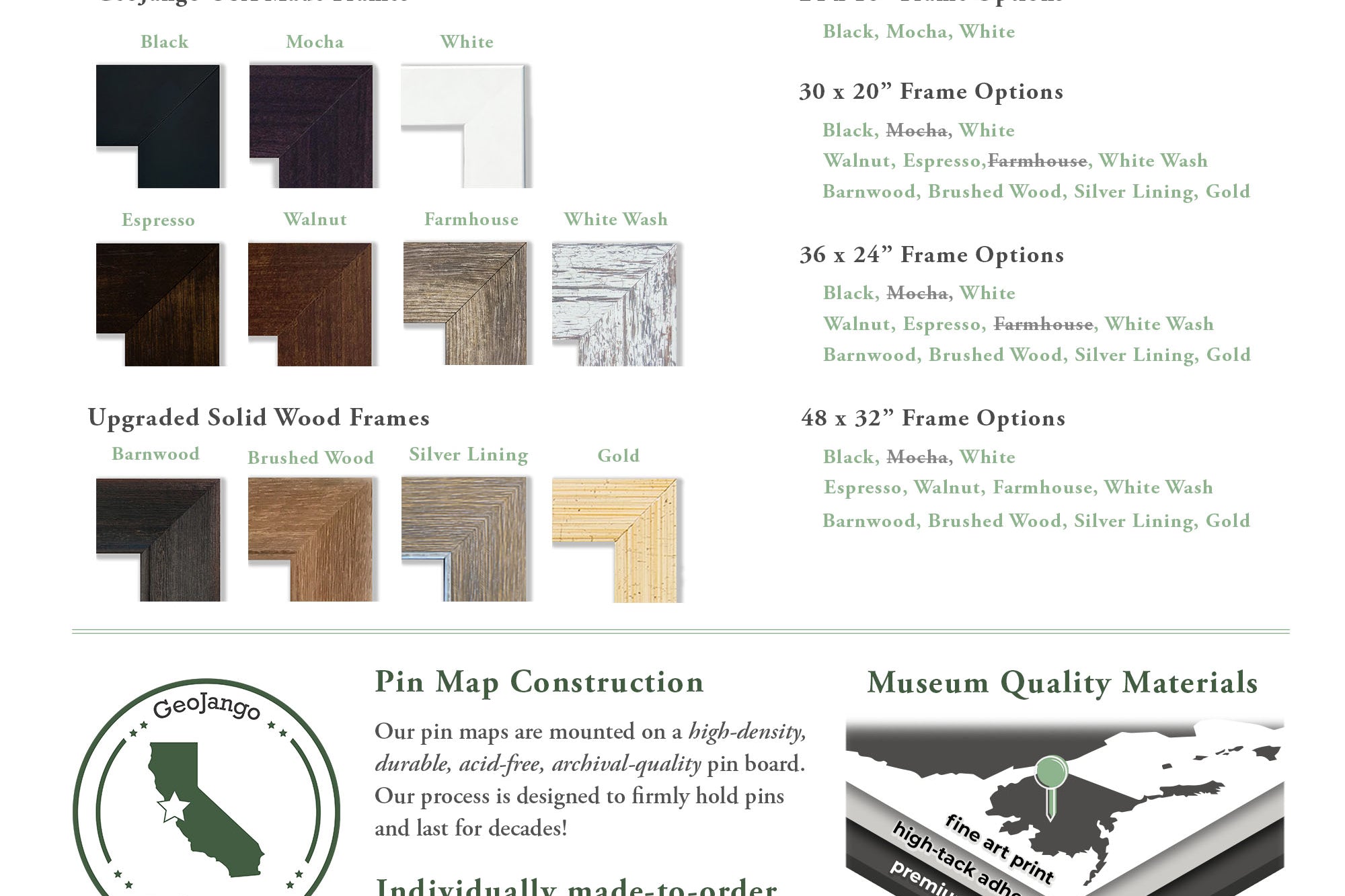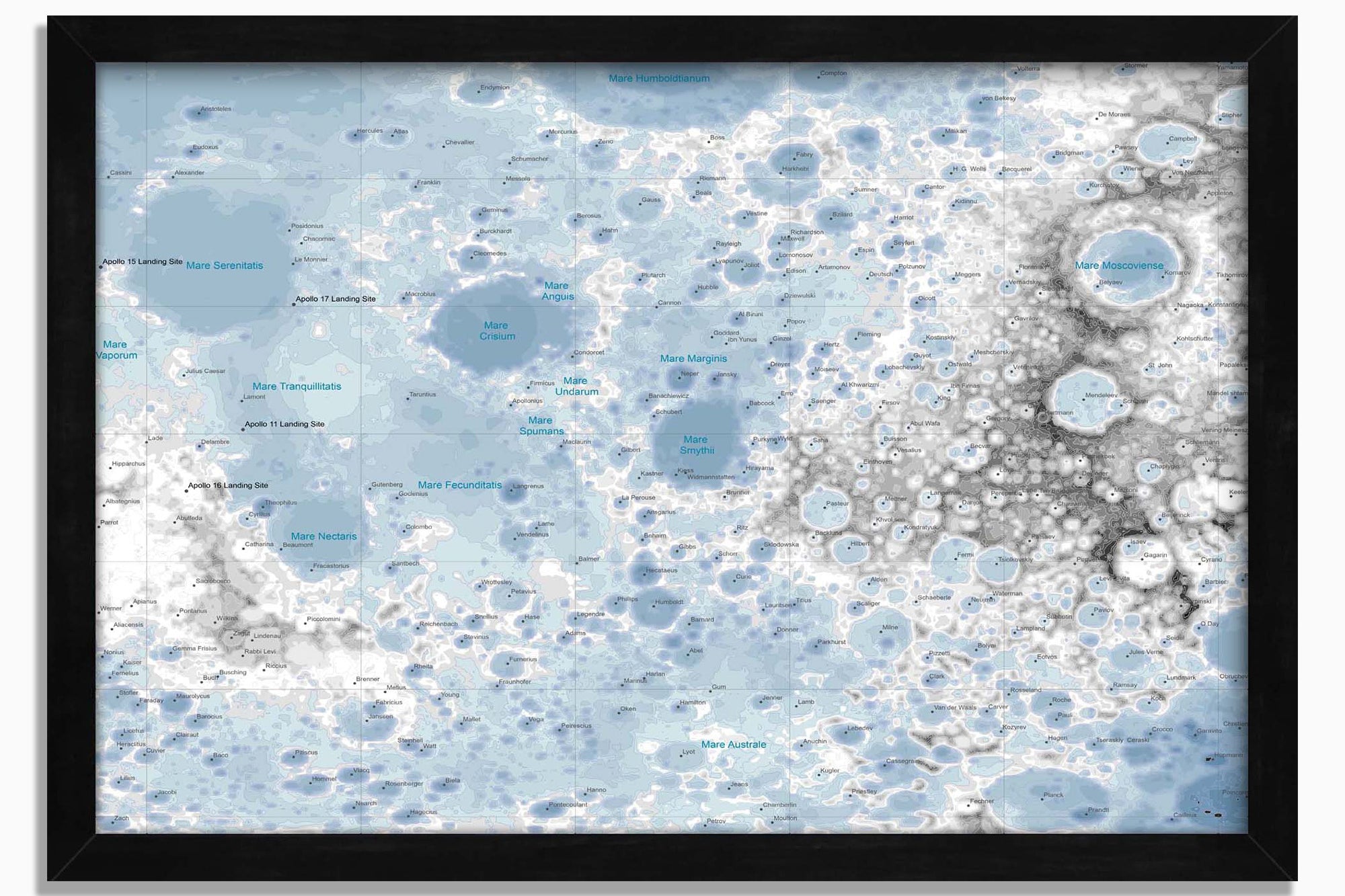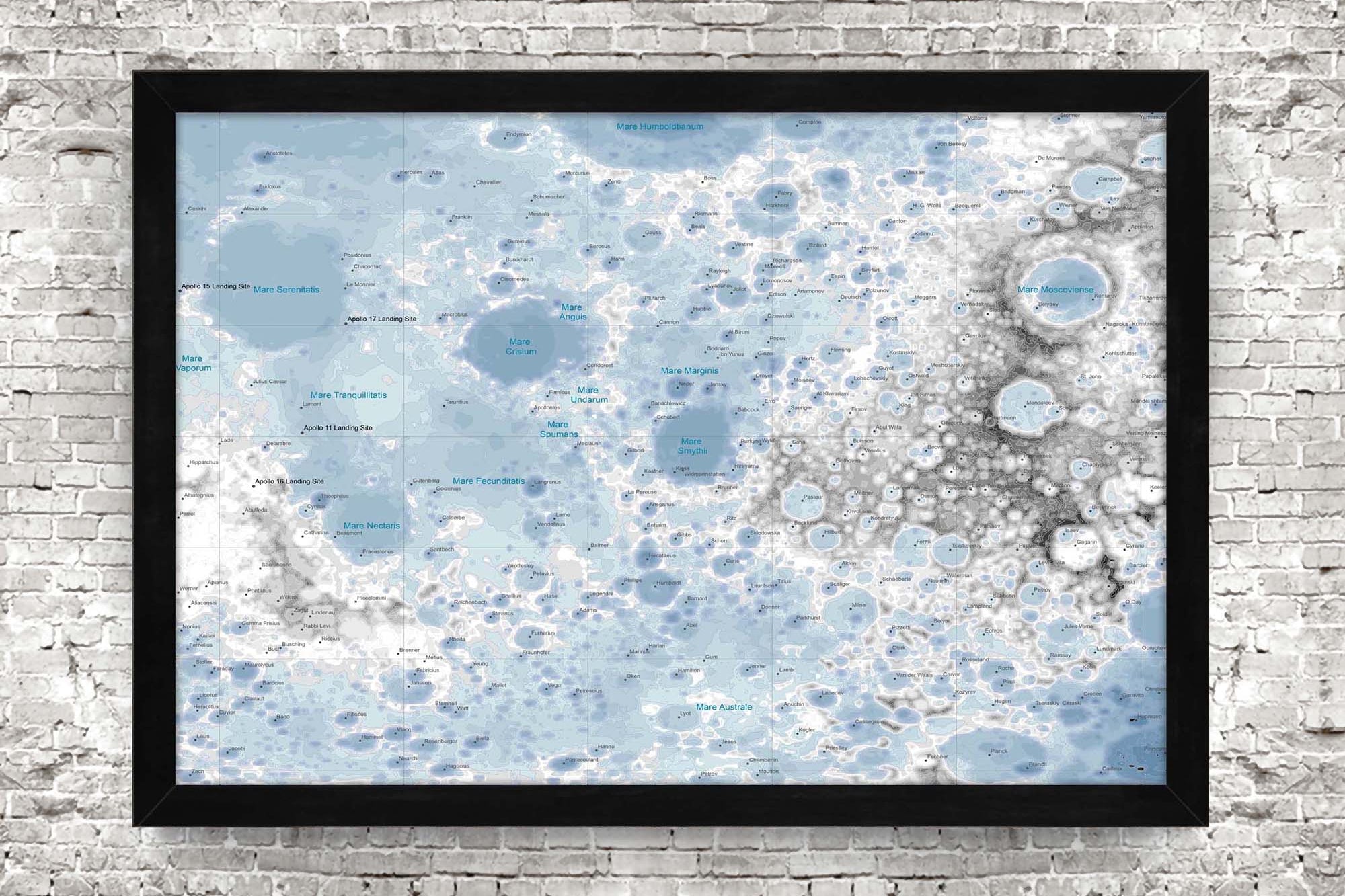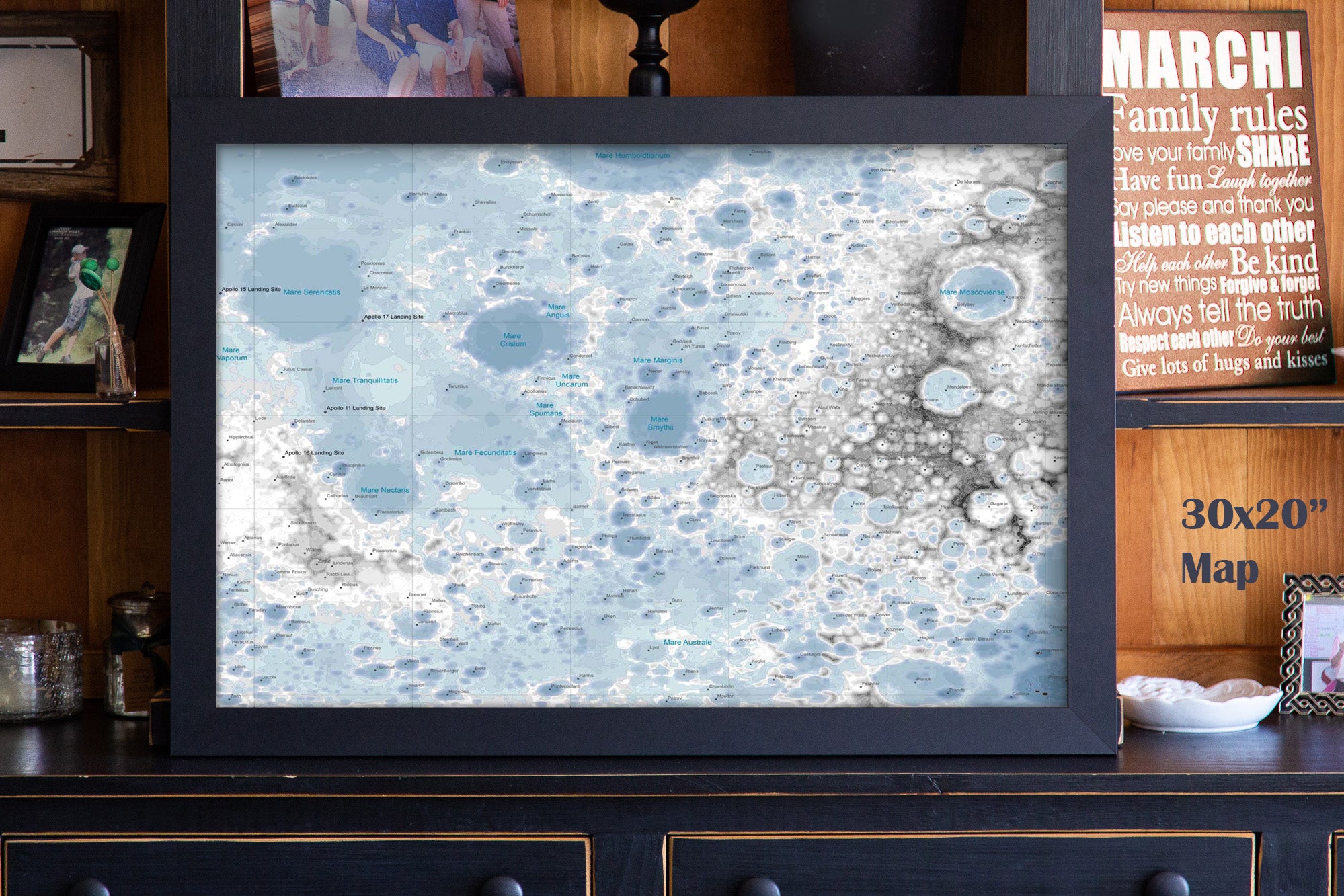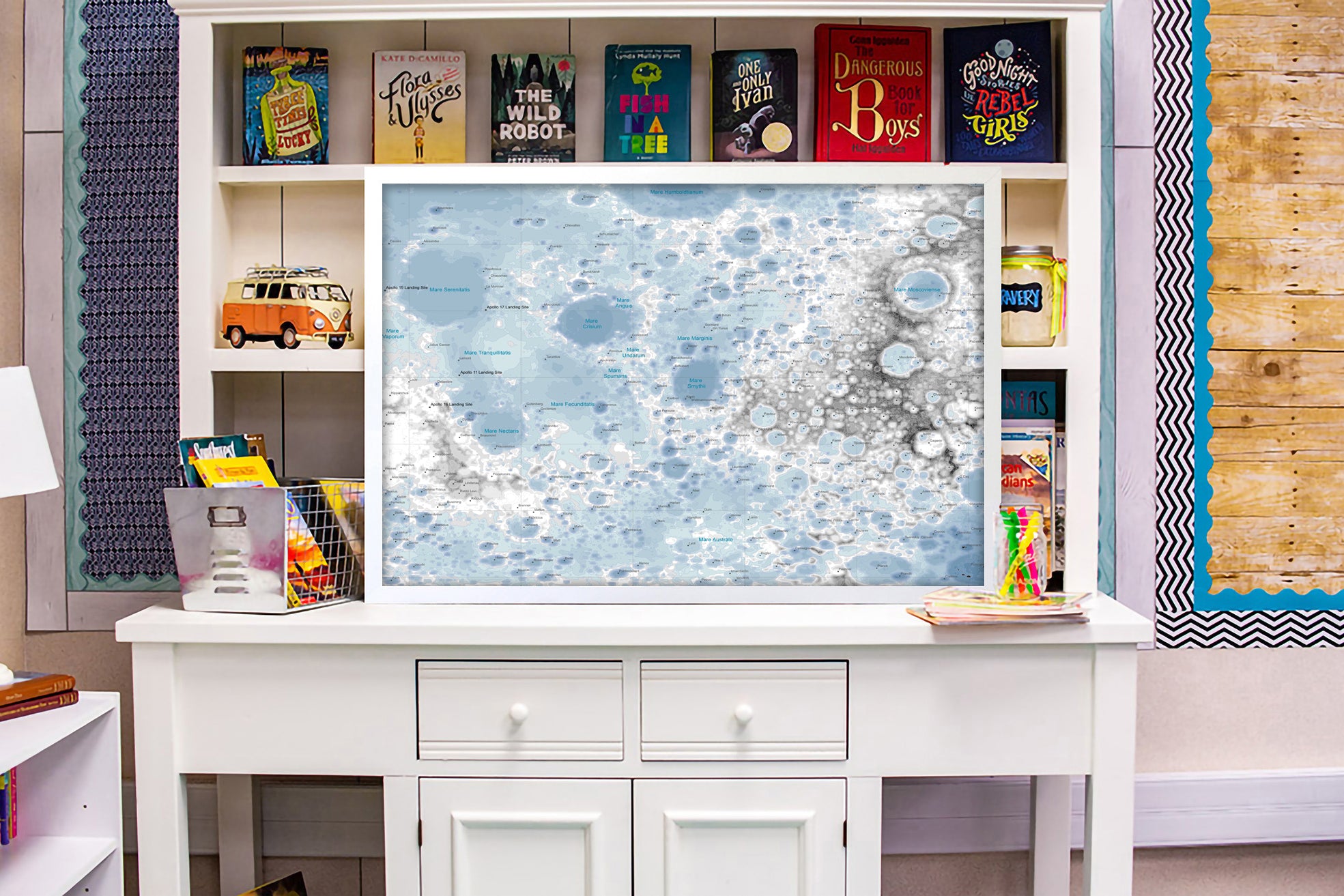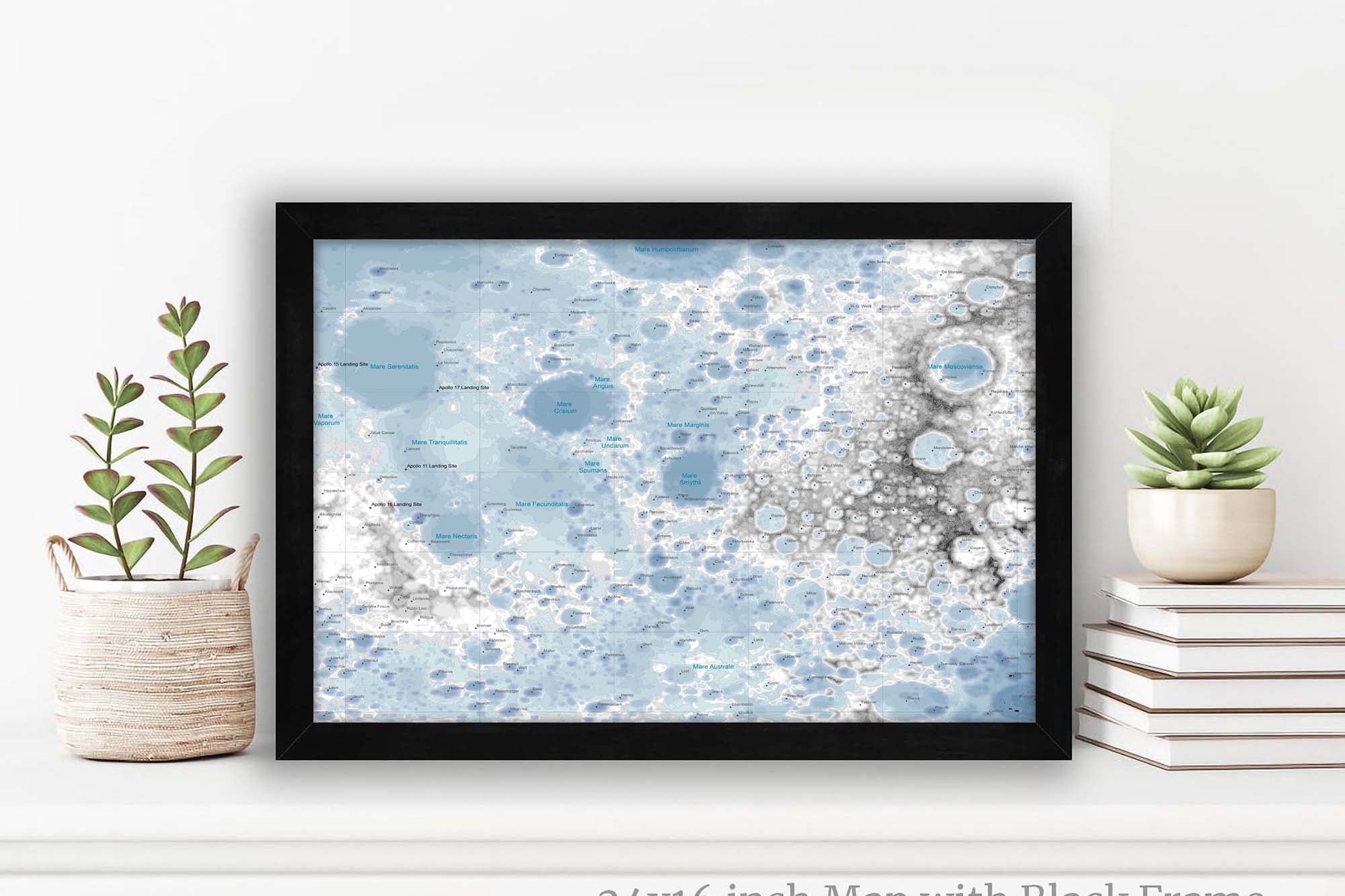These maps were created from point elevation data and then transformed into contours to reveal the ground elevation on the bright side of the moon. Every contour and color in this image illustrates the shape and elevation of the natural landscape.
See the Moon in 3D!
- Explore the facinating features of the moon's landscape.
- See intricacies of the lunar landscape, including its craters, ridges, mounts, and dry seabeds in 3D!
- With 3D glasses the craters transform into seemingly tangible formations, rising from the paper.
See the Moon in 3D!
- Explore the facinating features of the moon's landscape.
- See intricacies of the lunar landscape, including its craters, ridges, mounts, and dry seabeds in 3D!
- With 3D glasses the craters transform into seemingly tangible formations, rising from the paper.
Unlocking Lunar Mysteries
Exploring the Moon's Terrain through Chromodepth 3D Art and Chromadepth Glasses
The Moon, Earth's enigmatic companion, has fascinated humanity for millennia. Its desolate beauty and mysterious terrain have sparked curiosity, scientific inquiry, and artistic inspiration. As technology advances, we have delved deeper into the secrets of the lunar surface, creating detailed maps that unveil the Moon's complexities. Among the innovative methods employed, Chromodepth 3D Art, in conjunction with Chromadepth glasses, has emerged as a captivating way to visualize the Moon's landscape, offering insights and revelations that were once hidden from our view.
The Fascination with Lunar Mapping
For centuries, astronomers and explorers have peered at the Moon through telescopes, sketching its features and trying to decipher its history. However, it wasn't until the space age that we gained a more comprehensive understanding of the Moon's surface. Lunar missions, beginning with the Apollo program and extending to more recent robotic explorations, have provided us with an intricate tapestry of data about the Moon's geological features. This data has led to the creation of detailed maps that capture the intricacies of the lunar landscape, including its craters, ridges, mounts, and dry seabeds.
Unveiling Lunar Terrain with Chromodepth 3D Art
Chromodepth 3D Art has revolutionized the way we perceive and engage with visual representations. By harnessing the principles of color perception and depth, this technique brings two-dimensional images to life, creating the illusion of three-dimensional depth. When applied to lunar maps, Chromodepth 3D Art allows us to immerse ourselves in the Moon's terrain as never before.
Imagine looking at a Chromodepth 3D Art map of the Moon's surface. As you don Chromadepth glasses, the craters transform into seemingly tangible formations, rising from the paper or screen. The warm colors of reds and oranges lend a palpable quality to these depressions, making you feel as if you're hovering just above the surface. The ridges and mounts, rendered in cooler shades of blue and green, recede into the background, emphasizing the expanse and grandeur of these features. This immersive experience not only brings the Moon's terrain to life but also sparks the imagination, inviting viewers to explore its contours and mysteries in a whole new way.
Lunar Insights and Scientific Discoveries
Chromodepth 3D Art, when applied to lunar maps, offers more than just aesthetic appeal. It has the potential to provide valuable insights and enhance our understanding of the Moon's geological history. By visually emphasizing the elevation changes and contours of the lunar landscape, Chromodepth 3D Art can highlight subtle features that might be overlooked in traditional two-dimensional representations.
For instance, the technique could shed light on the intricate relationship between craters and their surroundings. Craters, formed by meteor impacts, can reveal clues about the Moon's past and its exposure to cosmic impacts over billions of years. Chromodepth 3D Art could accentuate the variations in depth and elevation of these craters, helping scientists better understand their formation and evolution.
Moreover, the technique can aid in identifying the relative ages of different lunar features. By studying the depth perception and visual contrast provided by Chromodepth 3D Art, researchers can infer which features are more eroded or younger, contributing to a deeper comprehension of the Moon's geological timeline.
Educational and Outreach Possibilities
Chromodepth 3D Art's potential extends beyond scientific research. It holds promise in educational outreach and public engagement initiatives. Imagine classrooms and museums equipped with displays that allow students and visitors to explore the Moon's terrain using Chromodepth 3D Art and Chromadepth glasses. This hands-on experience could inspire a new generation of scientists, astronomers, and space enthusiasts.
Through this interactive approach, learners can virtually traverse the Moon's landscape, guided by the color-coded depths of Chromodepth 3D Art. They could examine the formation of craters, ponder the origins of ridges, and speculate about the Moon's past and its connection to Earth's history. By fostering a sense of wonder and curiosity, this technology-driven engagement could lead to a deeper appreciation for space exploration and scientific discovery.
Innovative Approach
In the realm of lunar exploration, Chromodepth 3D Art, coupled with the use of Chromadepth glasses, represents a captivating leap forward. This innovative approach allows us to visualize the Moon's terrain with a level of depth and immersion that was once confined to our imagination. As we unravel the mysteries of the lunar surface, Chromodepth 3D Art has the potential to provide insights that go beyond aesthetics, contributing to scientific discoveries and inspiring the next generation of space enthusiasts. Through this unique fusion of technology, art, and science, we continue to expand our understanding of the cosmos and our place within it.
Frequently Asked Questions
Canvas & Satin Paper Comparison
When will my map arrive?
The amount of time it takes for your map to arrive depends on where you live and how fast you approve the proof if you’ve ordered a custom map.
General Shipping Times:
East Coast - 5 days after your map has shipped
Central - 4 days after your map has shipped
West Coast - 3 days after your map has shipped
Will there be a hole in my map if remove a pin?
Yes but seeing as though the holes are extremely small, it would be difficult to see them from more than a couple of feet away. Even then you would need to know exactly where to look in order to spot them.


